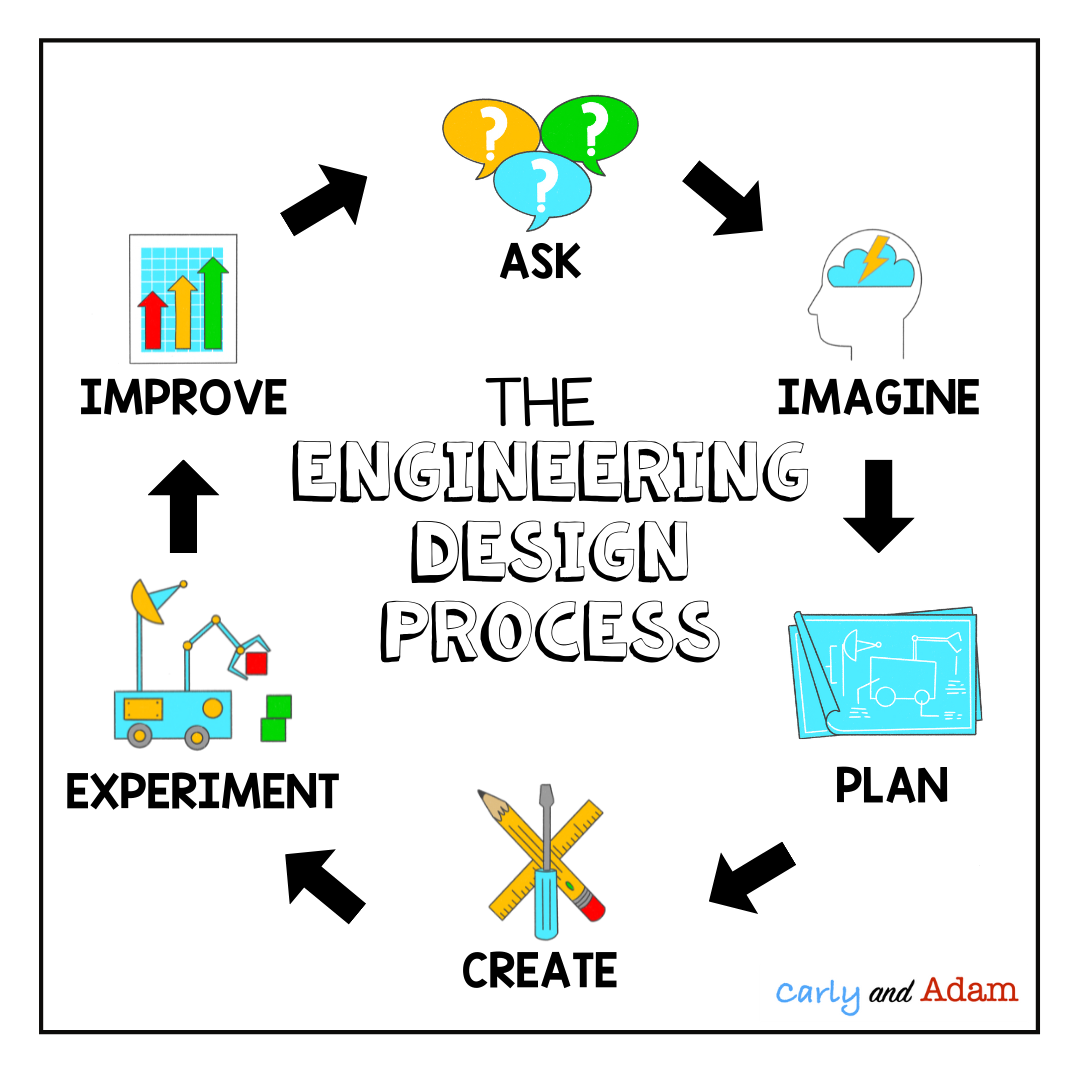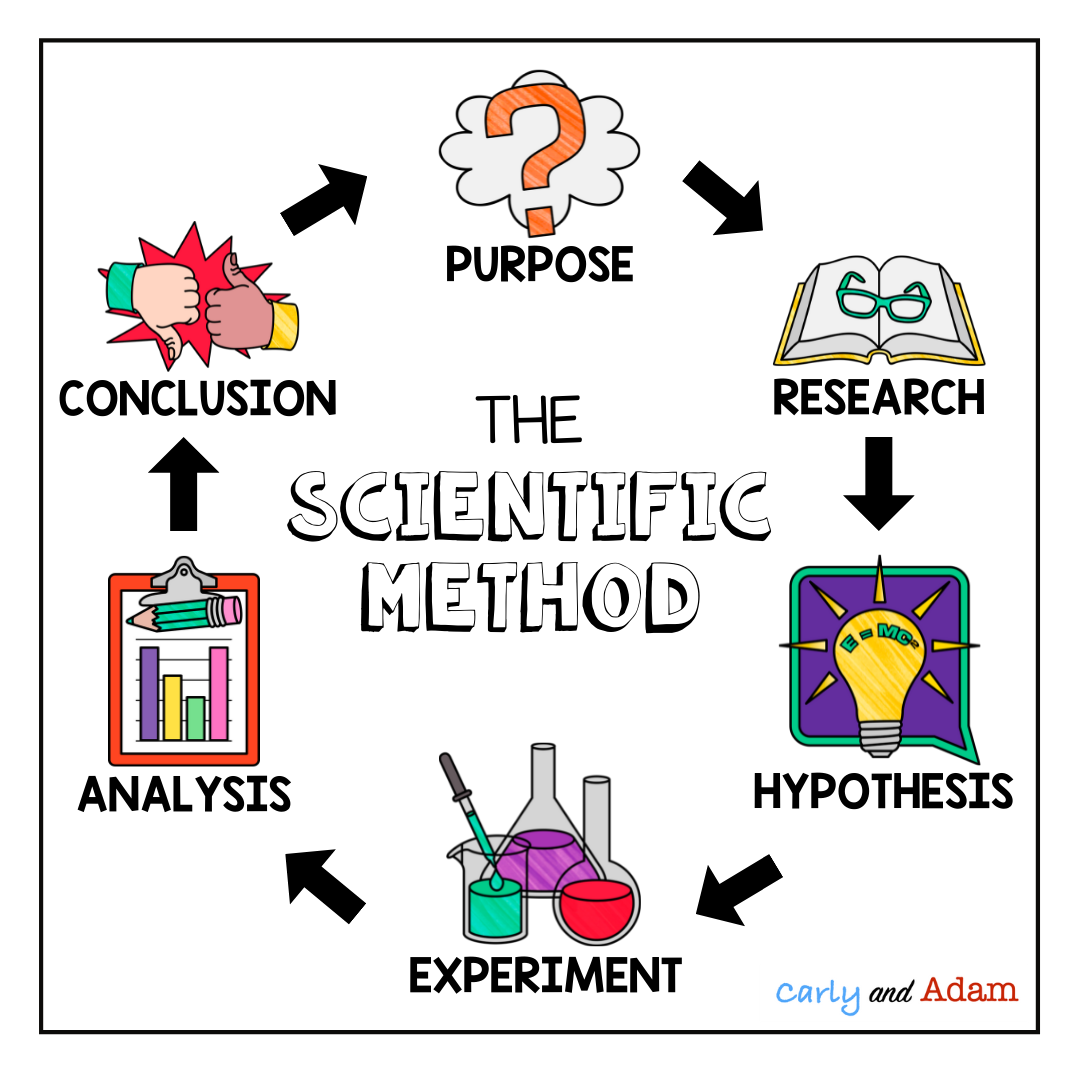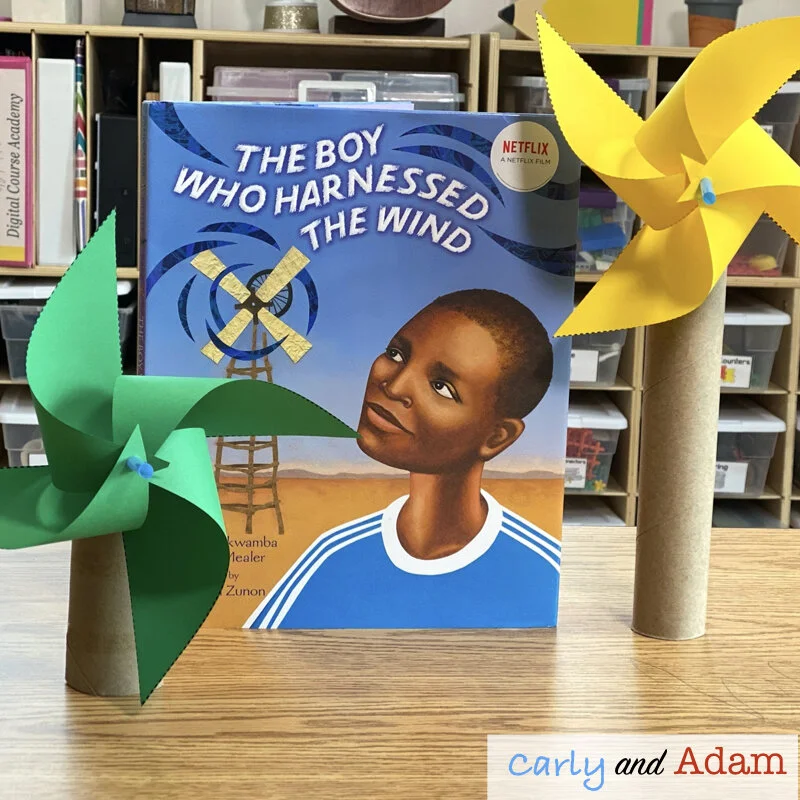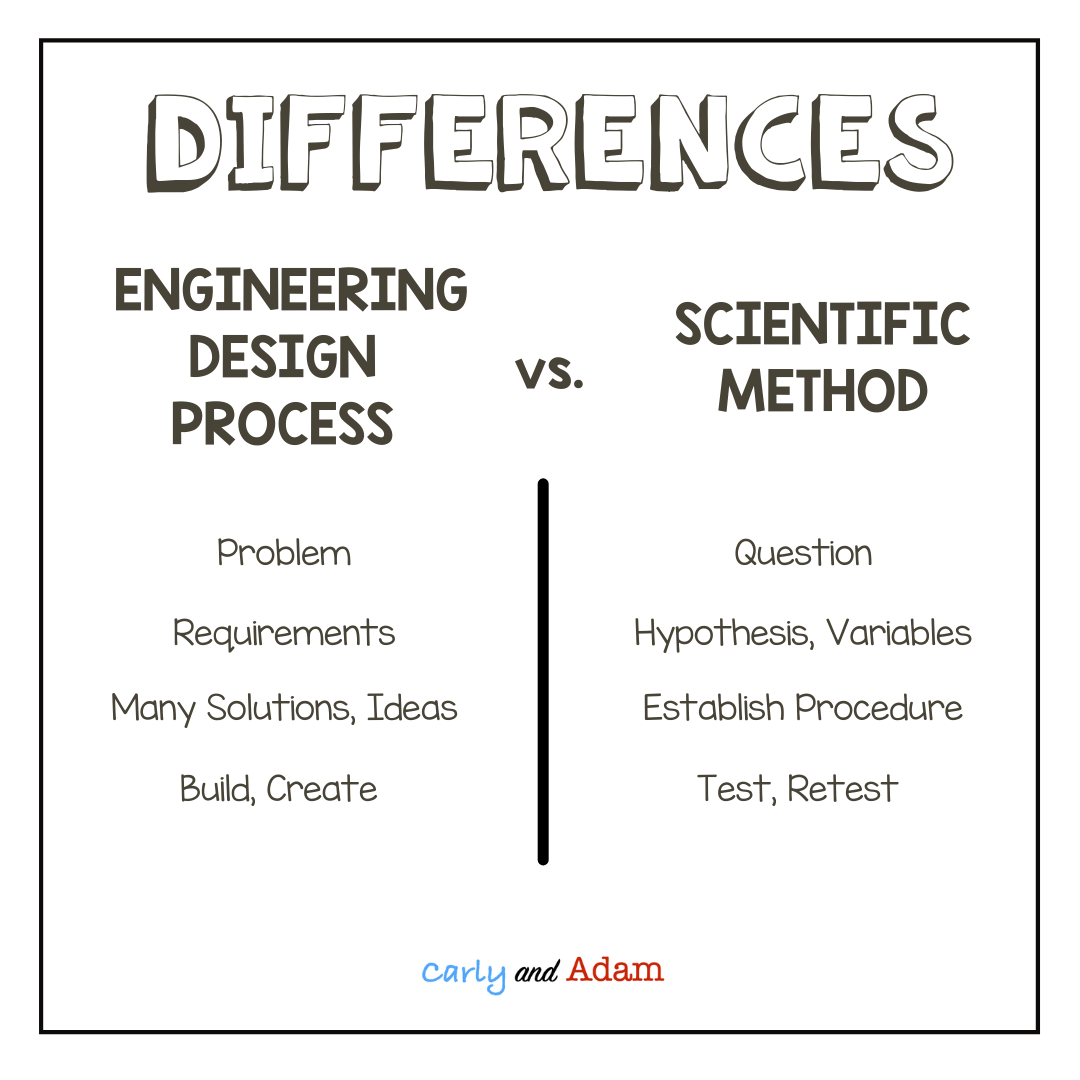The Engineering Design Process or The Scientific Method
The following is a guest post from Dr. Jacie Maslyk.
Within our classrooms, young learners are striving to be problem solvers, designers, and explorers. Some students are eager to code robots and others want to grow a vegetable garden. Some dream about designing and building skyscrapers while others want to know why the night sky changes. All of these topics (and more) are a part of STEM - the investigation of Science, Technology, Engineering, and Math.
Engineering Design Process vs. The Scientific Method
STEM learning is an opportunity to engage students in lessons that prompt them to think, plan, experiment, and invent. Our goal as educators is to support them in this process and create lessons that offer the opportunity to build new skills. The big question when exploring these types of hands-on learning opportunities with our students is “What framework should I use, the Engineering Design Process or the Scientific Method?”
What is the Engineering Design Process?
The Engineering Design Process (also called the Engineering Design Cycle) is a series of steps that engineers work through to identify and solve problems.
Ask: What is the problem that needs to be solved?
Imagine: What are some of the potential solutions to the problem?
Plan: Which solution seems to be the best fit?
Create: What will I sketch or build to solve this problem?
Experiment: Does my proposed solution actually work?
Improve: How can I improve my solution?
Choosing an engineering design challenge will push students to come up with possible solutions to a variety of problems using innovative thinking and creativity. In these challenges, students will use a variety of materials to create models and test them, often working with others and making improvements based on their feedback. For example, you might challenge your students to build a windmill with rotating blades.
Engineering design challenges tend to be open-ended and can lead to multiple correct solutions. In other instances, the topic or ideas that we want students to explore might require a different approach. We might use the scientific method so that students can experiment and learn about something in a more structured way.
What is the Scientific Method?
The scientific method is another instructional method that we can use to have students explore concepts in STEM. Using the scientific method students explore a question using a series of steps. They make a prediction and test their hypotheses arriving at a final conclusion.
Purpose: Ask a question about a topic that can be tested.
Research: Plan your investigation.
Hypothesis: Make a prediction about what you think will happen.
Experiment: Conduct the investigation and collect data about what occurred.
Analysis: Review your data and think about why.
Conclusion: Explain what you figured out by exploring the topic.
The Scientific Method can be used with students at any grade level. It is a way to tap into curiosities and seek out information to build understanding. Used primarily in science, the scientific method can also be used in experiences that focus on math and engineering. For example, you may want to challenge your students to use the scientific method to determine how many windmill blades are most efficient at harnessing the power of the wind.
How are the Engineering Design Process and the Scientific Method the Same?
These two models do have some similarities. Both require students to be active thinkers. Students must ask questions and search for solutions. Both pathways also require students to work and learn in a hands-on way. Both offer opportunities to communicate about the results for feedback. Both the engineering design process and the scientific method have steps that guide the learner through the process. Although the individual steps are different, both processes have similar goals and intended outcomes.
What are the Differences between the Engineering Design Process and the Scientific Method?
There are a few minor differences between the two discovery styles. The engineering design process asks students to define a problem. The scientific method starts with a question.
The engineering design process asks students to build a prototype, while the scientific method asks students to use an experiment to test their hypothesis. The engineering design process allows the opportunity to test and redesign. The scientific method allows students the opportunity to analyze the results.
Although this is not always the case, the engineering design process often works well for teams of students collaborating to combine ideas and create a possible solution. The scientific method can successfully be used by one scientist or a pair of scientists working together.
In the Classroom
Let’s take a closer look at how each model can be used around the same topic.
A class of third graders is studying water. The teacher isn’t sure which approach should be used.
Taking the engineering design process as a pathway, students might be challenged to work together to create a device that can collect rainwater. After learning about conservation and the scarcity of water around the world, this challenge will bring STEM to life as they work together to solve a real-world problem. As students design their devices, they have access to a variety of materials and are given free rein as to what they will create.
On the same topic of water, maybe this class has explored the pH of water and they plan to test tap water, bottled water, and water collected outside after a rainstorm. The scientific method allows the students to come up with a hypothesis about the pH for each type of water.
Using the engineering design process, students select a topic, choose from different materials, and generate their own ideas. Using the scientific method, students explore this particular idea around pH, testing their hypothesis and collecting data to answer their questions. Both discovery styles offer a successful path to learning.
Lessons to try using the engineering design process:
Build a flying machine for Rosie Revere Engineer. (FREE Download)
Lessons to try using the scientific method:
How do You Know Whether to Choose the Scientific Method or the Engineering Design Process?
Having difficulty deciding whether to use the Engineering Design Process or the Scientific Method? There is no right or wrong choice. Different STEM educators choose different paths. It is up to you and your students how you would like to explore new topics in the curriculum.
But what if I choose the wrong one?
As your students engage in your intended lesson, you may find that a different model would have been better suited to this content and understanding. That is OK! What is most important is building a culture for STEM learning that encourages students to learn, grow, and be adaptable together.
For more STEM ideas, inspiration, and collaboration with other STEM teachers be sure to join our FREE Facebook group Elementary STEM Teachers with Carly and Adam!
We hope you have found this blog post helpful. To stay connected with Carly and Adam's teaching tips and classroom freebies be sure to follow us on Facebook, Pinterest, Teachers Pay Teachers, and subscribe to our blog!
An educator for the last 23 years, Dr. Jacie Maslyk, has served as a classroom teacher, reading specialist, elementary principal, and assistant superintendent. She is the author of STEAM Makers: Fostering Creativity and Innovation in the Elementary Classroom, Connect to Lead: Power Up Your Learning Network to Move Your School Forward (ISTE), Remaking Literacy: Innovative Instructional Strategies for Maker Learning and Unlock Creativity: Opening a World of Imagination With Your Students. You can read more on her blog, Creativity in the Making, at www.jaciemaslyk.blogspot.com. Connect with Jacie on Twitter @DrJacieMaslyk or email her at jaciemaslyk@gmail.com .







